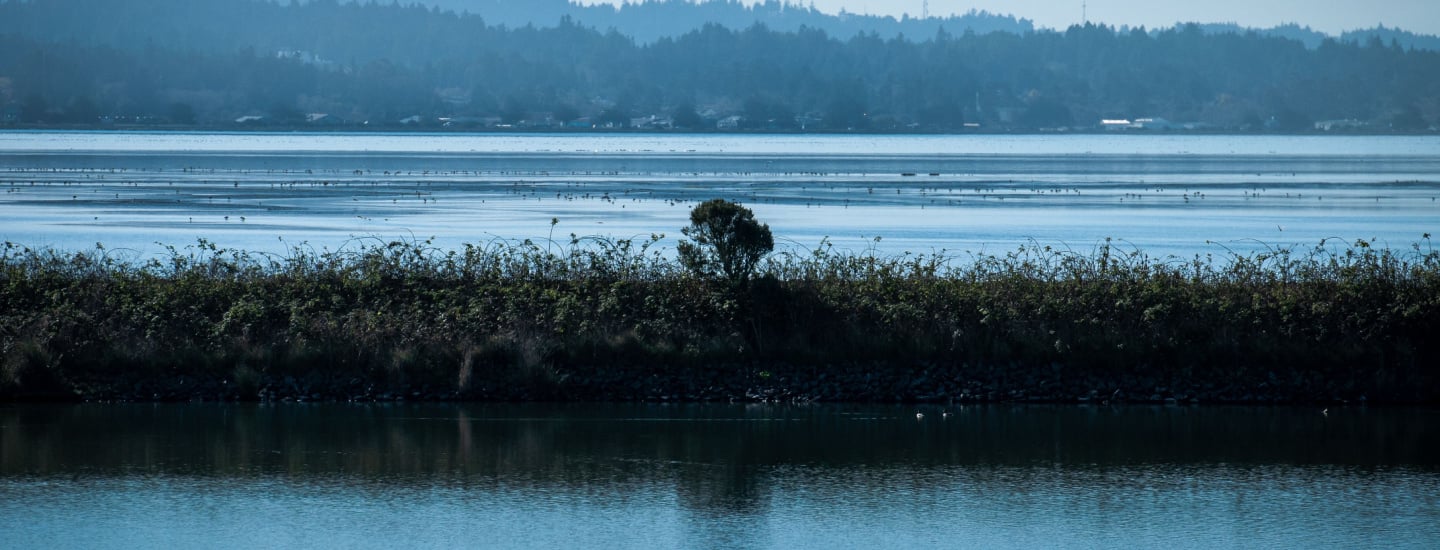
The Surfrider Foundation, on behalf of its Humboldt Chapter, is calling for a thorough review of environmental impacts associated with a proposed offshore wind farm terminal in Humboldt Bay, California. The Humboldt Bay and Harbor Conservation District is getting ahead of itself with project planning and execution prior to completing environmental review. Surfrider wants to ensure that Humboldt Bay’s recreational resources are protected, as activities like kayaking, stand up paddling and surfing are very popular in the Bay.
In October 2022, the District entered into an Exclusive Right to Negotiate Agreement with Crowley Wind Services, Inc. for the Humboldt Bay Offshore Wind Heavy Lift Multipurpose Marine Terminal Project. The District has further indicated it plans to proceed with a lease of Harbor property in Samoa to Crowley, for the development and operation of the project, which will support the offshore floating wind industry and other maritime uses, before an environmental review is completed. Surfrider has also expressed concerns regarding Crowley’s track record on environmental sustainability and social responsibility.
On October 11, 2023, Surfrider submitted a letter to the Harbor District calling for the consideration of a final Environmental Impact Report (“EIR”) prior to entering into an Option Agreement or Lease of property, as required by the California Environmental Quality Act (“CEQA”). One of California’s most important environmental laws, CEQA is intended to inform the public and decision makers of a project’s significant effects and identify project alternatives and mitigation measures to avoid or mitigate harms to the environment. CEQA and its regulations require that before granting any approval of a project which may have significant effects on the environment, that the agency first prepare and consider a final EIR.
As evidenced by the Harbor District’s Negotiation Agreement, the District anticipates entering into an Option Agreement giving Crowley the right to enter into a Lease for the terminal property. The Lease would be an exhibit to the Option Agreement, with all terms and conditions, as predetermined during the Negotiations Period, included. Under CEQA, leases are “projects” and in this case, the lease must be analyzed as part of the whole wind terminal project.
The Negotiation Agreement purports that the Option Agreement will condition Crowley’s exercise of the option on CEQA compliance, but the California Supreme Court has invalidated such a condition, where the surrounding circumstances show that an agency has committed to the project. “… [I]f the agreement, viewed in light of all the surrounding circumstances, commits the public agency as a practical matter to the project, the simple insertion of a CEQA compliance condition will not save the agreement from being considered an approval requiring prior environmental review.” Save Tara v. City of West Hollywood, 45 Cal.4th 116, 132 (Cal. 2008).
Here, as demonstrated and bolstered by surrounding circumstances, the Option Agreement and Lease will commit the Harbor District to the wind terminal project. As noted, all terms and conditions will already be incorporated in the Lease. Additionally, the Harbor District has already obtained funding which will be used, in part, for “up to 30% engineering design” and to “complete required mitigation.” The District has further agreed to cooperate with Crowley in efforts to obtain additional grants and other funding to obtain entitlements and for constructing the project. In Save Tara, the California Supreme Court considered whether an agency had lent its political and financial assistance in determining whether it had committed to a project, and such assistance supports a finding of commitment. Finally, the Harbor District’s October 25, 2022 staff report proclaimed that “[t]he Harbor District is committed to working with the County of Humboldt, City of Eureka, Humboldt Core Hub, residents of the Samoa Peninsula, [and] adjacent […] property owners around the Humboldt Bay to take advantage of the tremendous opportunities that the offshore wind industry can provide to our region.” Accordingly, under CEQA, the Harbor District must consider a final EIR prior to entering into an Option Agreement or Lease.
As the California Supreme Court has explained, an “EIR is intended to demonstrate to an apprehensive citizenry that the agency has in fact analyzed and considered the ecological implications of its action. […] When an agency reaches a binding, detailed agreement with a private developer and publicly commits resources and governmental prestige to that project, the agency's reservation of CEQA review until a later, final approval stage is unlikely to convince public observers that before committing itself to the project the agency fully considered the project's environmental consequences. Rather than a "document of accountability" […], the EIR may appear, under these circumstances, a document of post hoc rationalization.”
Here, should the Harbor District enter into a Lease with Crowley prior to EIR certification, the EIR would be just that – a document of post hoc rationalization.
Surfrider Foundation recognizes that projects that utilize wind as a renewable source of energy can help reduce dependence on fossil fuels and greenhouse gas emissions, and are therefore important for mitigating climate change impacts. However, recognizing that there many questions and concerns about renewable ocean energy, including potential impacts to ocean recreation, the coastal and ocean environment, public safety, access, and aesthetics, Surfrider takes a cautious, measured approach to offshore wind projects. Surfrider only supports them when there is thorough information, including with respect to potential environmental impacts, and if the projects meet a high bar for environmental and recreational protection. This evaluation applies to potential offshore development, as well as related port development and shore-based infrastructure.
Accordingly, both CEQA and Surfrider’s Renewable Ocean Energy Policy require that the Harbor District undertake a thorough consideration of all significant effects, alternatives, and mitigation measures in a final EIR, before entering into an Option Agreement or Lease for the terminal project.
